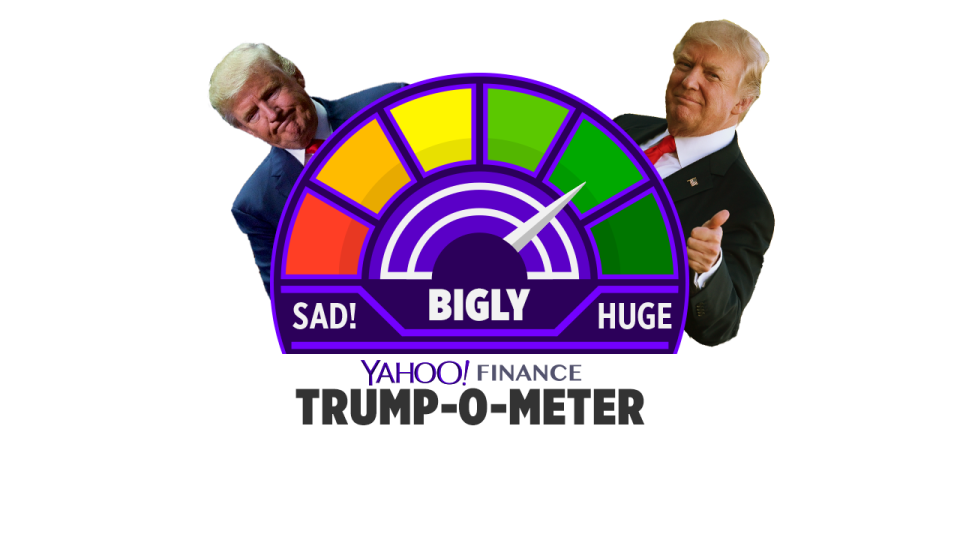This week in Trumponomics: Trump becomes a globalist
“Oh.”
That word sums up President Trump’s realization that maybe the Trans-Pacific Partnership wasn’t such a bad deal, after all. As a candidate, Trump declared the TPP a “disaster,” and he withdrew the United States from the 12-nation pact during his first week in the White House. But now, Trump has directed his advisers to explore whether there’s a way back in.
The change of heart likely comes as Trump realizes he needs leverage in his trade spat with China—which is exactly what the TPP is supposed to accomplish. The trade deal was intended to develop an Asian trading bloc that could serve as a counterweight to China, as its economic might grows. The pact includes US allies such as Japan, Australia, Canada and Mexico—but not China. It went into effect without the United States this year.
Trump says he’s only interested in rejoining the pact if the United States gets better terms. The other member nations might say, “nah, we’re good.” Nonetheless, Trump’s move toward moderation on trade earns him a grade of “bigly” on our new, weekly Trump-o-meter, which is the equivalent of a B.

The other big news in Trumponomics this week is that Trump didn’t do anything to further rattle financial markets. Instead, markets cheered when Chinese president Xi Jinping said in a big-deal speech on April 10 that China would grant some of the trade concessions Trump has been demanding. Xi didn’t say it like that, exactly. He didn’t refer directly to trade disputes with Washington, or to Trump’s demands. But he did say China would ease restrictions on foreign investments in its auto industry—now the largest in the world—by the end of the year. That was new. He also dissed the “Cold War mentality” some policymakers—i.e., Trump—seem to have, while promising other, less specific reforms.
[See the grade Trump earns in our Trumponomics Report Card.]
Also important is what he did not say. Xi could have matched Trump’s threat to impose new tariffs on $100 billion worth of imports, escalating the trade spat further. But he didn’t. That has allowed Trump to have the last word, for now. Here’s a quick scorecard of what each side has done:
Round 1: Trump has imposed tariffs on about $3 billion worth of steel and aluminum imports from China. In response, China has imposed tariffs on about the same amount of US exports to China. Winner: Nobody
Round 2: Trump has begun the process of imposing tariffs on an additional $50 worth of imports from China. It could be months before those tariffs go into effect, and Trump could rescind them. China has responded by identifying $50 billion worth of US imports it would place similar tariffs on. Winner: Nobody
Round 3: Trump has threatened to put tariffs on yet another $100 billion worth of Chinese imports—but he hasn’t done anything official yet. And China has not responded in kind, though it could if Trump follows through. Winner: Trump, potentially. By breaking the tit-for-tat pattern, China may be signaling it’s willing to deal – but only if Trump is willing to accept small concessions and declare victory.
Xi’s reassuring speech reversed a stock selloff from the prior day, with the Xi Jinping Rally lifting the S&P 500 a nifty 1.7% the day he spoke. With a temporary respite from Trump’s trade threats, markets continued to drift upward as the first-quarter earnings season got underway, with generally upbeat results. Markets may wobble if there’s a US military strike in Syria, as Trump has threatened. But a missile strike last year barely fazed markets, and Wall Street only seems to care about strife in the Middle East if it affects oil prices. Most eyes will quickly return to Trump’s Twitter feed.
Confidential tip line: [email protected]. Encrypted communication available.
Read more:
Rick Newman is the author of four books, including Rebounders: How Winners Pivot from Setback to Success. Follow him on Twitter: @rickjnewman
Follow Yahoo Finance on Facebook, Twitter, Instagram, and LinkedIn
